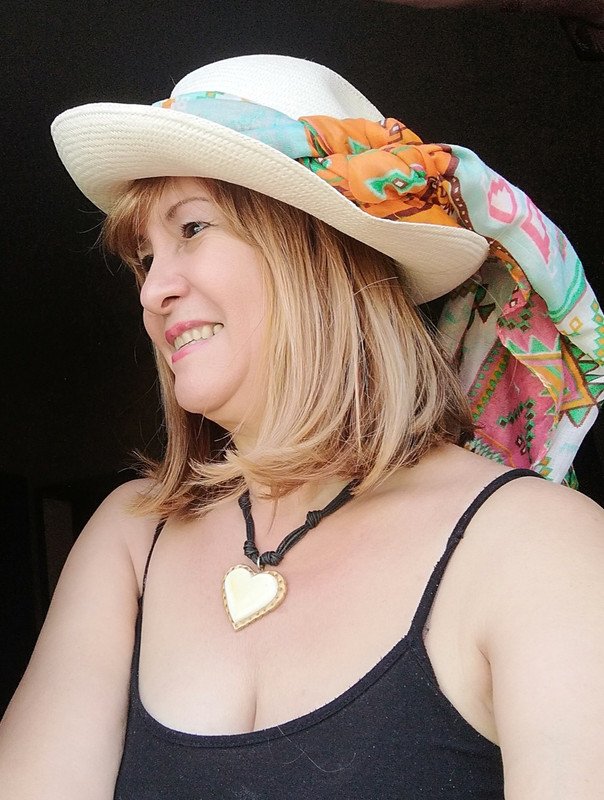Iniciativa: En "Carnaval con Amor" 🎉 🤡, homenaje postumo al "DIABLO DE CUMANÁ "// Initiative: In "Carnival with Love" 🎉 🤡, postumous tribute to the "DIABLO DE CUMANÁ". [ESP - ING]
¡Un placer saludarlos!
A pleasure to greet you!
Hola amigos de esta querida comunidad, hoy siento complacencia al unirme a la iniciativa de nuestra querida @lisfabian #reiresgratis sobre: Carnaval y Amor. En Venezuela hablar de carnaval, es hablar de bailes, comparsas, reinas, vacaciones y por supuesto playas, pero además es hablar de historias y tradiciones como una que más adelante estaré compartiendo con ustedes.
Hello friends of this dear community, today I am pleased to join the initiative of our dear @lisfabian on: Carnival and Love. In Venezuela to talk about carnival, is to talk about dances, comparsas, queens, vacations and of course beaches, but it is also to talk about stories and traditions like the one I will be sharing with you later on.
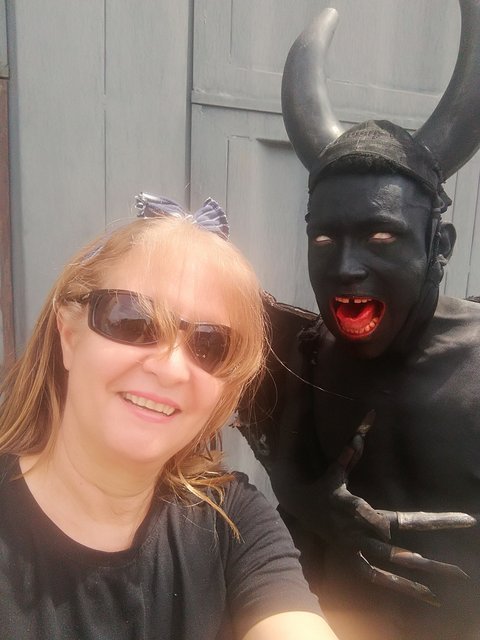
Es tradición en todas las regiones de Venezuela jugar carnaval con agua. Por ello es común oír la expresión "vamos a jugar carnaval", el juego consiste en bañarse unos a otros con agua, algunas veces se agregan otras sustancias como harina y huevos. Mi mamá me cuenta que cuando ella era pequeña también se jugaba carnaval con talco y "azulillos", este último lo diluían en agua y así pintaban a las personas de azul. El juego se iniciaba desde tempranas horas del día y en la tarde nos vestíamos y otros se disfrazaban para ir a ver las carrozas.
It is a tradition in all regions of Venezuela to play carnival with water. That is why it is common to hear the expression "let's play carnival", the game consists of bathing each other with water, sometimes other substances such as flour and eggs are added. My mother tells me that when she was little they also played carnival with talcum powder and "azulillos", the latter was diluted in water and thus painted people blue. The game started early in the day and in the afternoon we would dress up and others would dress up to go see the floats.
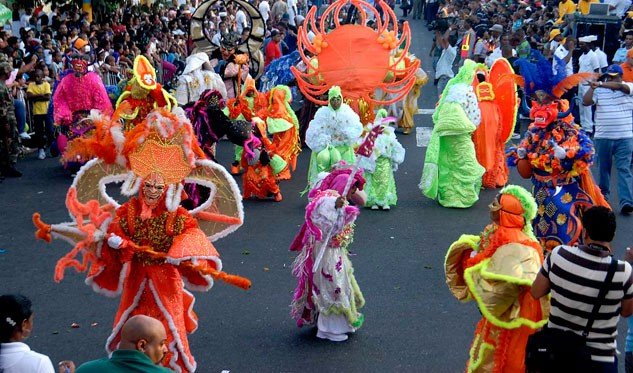
En Cumaná, ciudad del oriente venezolano; solemos festejar el carnaval con desfiles de carrozas y comparsas como: La Sirena, El pájaro guarandol, La lancha a Nueva Esparta y El sebucán. Las comunidades, instituciones educativas y organismos estadales participan adornando camiones para pasear a sus respectivas reinas junto al cortejo de las finalistas del certamen de belleza. Desde las carrozas lanzan caramelos, serpentinas y papelillos a los asistentes que bordeamos las calles para ver a las reinas al son del grito: "Aquí es, aquí es, tírame los caramelos".
In Cumaná, a city in eastern Venezuela, we usually celebrate the carnival with parades of floats and comparsas such as: La Sirena, El pájaro guarandol, La lancha a Nueva Esparta and El sebucán. The communities, educational institutions and state organizations participate by decorating trucks to carry their respective queens along with the procession of the finalists of the beauty contest. From the floats they throw candies, streamers and papers to the assistants that border the streets to see the queens to the sound of the cry: "Here it is, here it is, throw me the candies".
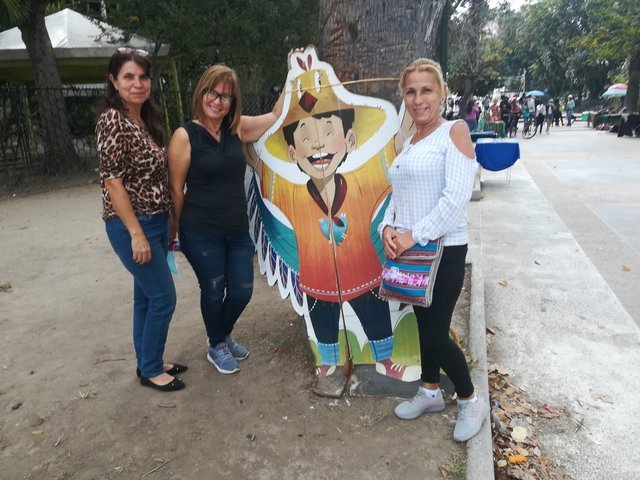
En los últimos años la Avenida Perimetral, ahora denominada Avenida Cacique Maragüey, ha sido el lugar donde se exhiben carrozas y disfraces de niños y adultos. La fiesta continúa toda la noche con orquestas musicales en la misma avenida a la altura del "Monumento" y los asistentes bailan al son de la música a la orilla de la playa y al igual que cuando niños también nos mantenemos muy alertas porque en el momento menos pensado y en forma sorpresiva haría su aparición el "Diablo de Cumaná".
In recent years the Perimetral Avenue, now called Cacique Maragüey Avenue, has been the place where floats and costumes for children and adults are exhibited. The party continues all night with musical orchestras in the same avenue at the height of the "Monument" and the attendees dance to the sound of music at the edge of the beach and just like when we were children we also keep very alert because at the least expected moment and in a surprising way the "Devil of Cumaná" would appear.
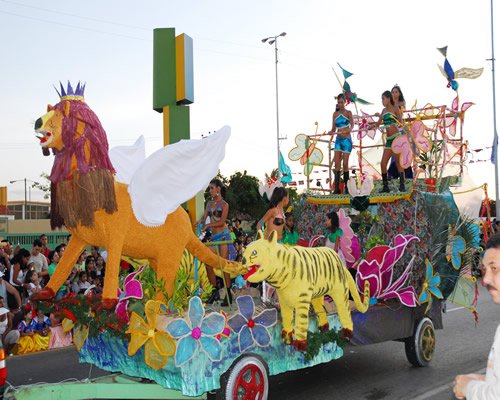
El "Diablo de Cumaná", señor Luis Del Valle Hurtado, es un personaje que por más de 60 años recorrió caseríos y ciudades del oriente venezolano, trajeado con guayuco, con su cuerpo pintado con humo negro y tizne, la boca y la lengua pintadas de rojo intenso, además de unos cachos bien protuberantes en su cabeza. Era divertido verlo danzar en las celebraciones de Santa Inés; Patrona de Cumaná y en los carnavales disfrutar de sus hermosas coreografías, siempre con su atuendo y su temible lanza asustando y correteando a las personas que se cruzaban en su camino.
The "Devil of Cumaná", Mr. Luis Del Valle Hurtado, is a character that for more than 60 years toured villages and cities of eastern Venezuela, dressed in guayuco, with his body painted with black smoke and smut, mouth and tongue painted bright red, plus some very protruding horns on his head. It was fun to see him dance in the celebrations of Santa Inés; Patron Saint of Cumaná and in the carnivals enjoy his beautiful choreographies, always with his attire and his fearsome spear scaring and running around the people who crossed his path.
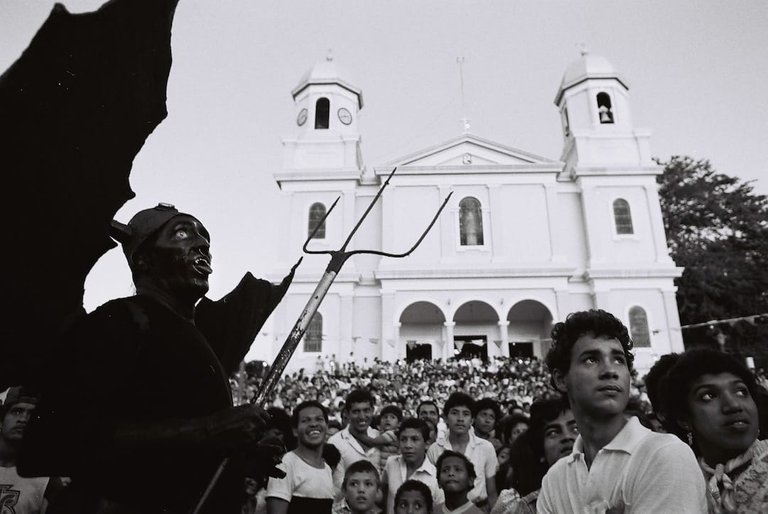
Este personaje no era sólo una persona disfrazada de danzante, sino un icono folklórico cuya expresión quedará grabada en el recuerdo de todos los cumaneses, tanto en chicos, jóvenes y adultos, pasando en cada etapa por diferentes sentimientos como el miedo que causaba en los niños, la alegría que producía en la muchedumbre y el sentimiento de nostalgia que le causa a los mayores al recordar su trayectoria y las innumerables veces que lo vieron por nuestras calles.
This character was not only a person disguised as a dancer, but a folkloric icon whose expression will remain engraved in the memory of all the people of Cuman, both children, youth and adults, passing at each stage through different feelings such as the fear he caused in children, the joy he produced in the crowd and the feeling of nostalgia that causes the elders to remember his career and the countless times they saw him in our streets.
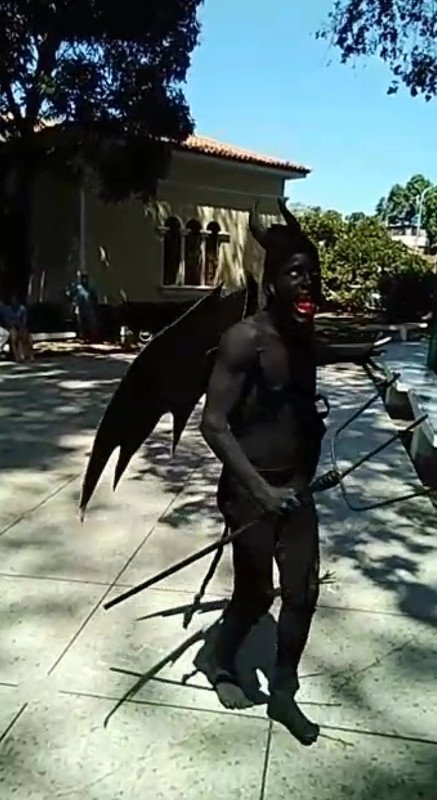
Photo of an imitator Devil, taken by me at the Ayacucho Park in Cumaná, on February 3, 2022, during the celebration of the birth of the patriot from Cumaná: Antonio José de Sucre.
Desearía que esta tradición nunca acabara y que su imagen y recuerdo perdurara en nuestro Estado Sucre y desde esta tribuna invito a sus imitadores para que con gracia, elegancia y con respeto a su memoria mantengan esta tradición como un tesoro y una vivencia que se transmita de generación en generación.
I wish that this tradition would never end and that his image and memory would last in our State of Sucre and from this tribune I invite his imitators so that with grace, elegance and with respect to his memory they maintain this tradition as a treasure and an experience that is transmitted from generation to generation.

Foto de un Diablo imitador, tomada por mí en el Parque Ayacucho de Cumaná, el 3 de Febrero de 2022 en los actos de Celebración del Natalicio del patriota cumanés: Antonio José de Sucre.
El 15 de Abril de 1994 el "Diablo de Cumaná" fue nombrado "Patrimonio Cultural Viviente del Estado Sucre". Este famoso creador cumanés dejó de existir el 23 de Julio de 2021 en su casa ubicada en el populoso barrio denominado "Cochabamba" en Cumaná. La danza del "Diablo de Cumaná" se convirtió en parte del folklore venezolano y antes del fallecimiento de Luis Hurtado surgieron imitadores que aspiran darle continuidad a esta simpática y alegre tradición. En las fotos que ilustran esta publicación aparezco acompañada por un diablo imitador, son fotos propias tomadas una soleada tarde del pasado año en la céntrica calle Comercio de Cumaná.
On April 15, 1994 the "Diablo de Cumaná" was named "Living Cultural Heritage of the State of Sucre". This famous creator from Cumaná passed away on July 23rd, 2021 in his house located in the populous neighborhood called "Cochabamba" in Cumaná. The dance of the "Diablo de Cumaná" became part of the Venezuelan folklore and before the death of Luis Hurtado there were imitators who aspire to give continuity to this nice and joyful tradition. In the photos that illustrate this publication I appear accompanied by an imitator devil, they are my own photos taken on a sunny afternoon last year in the central Comercio street of Cumaná.
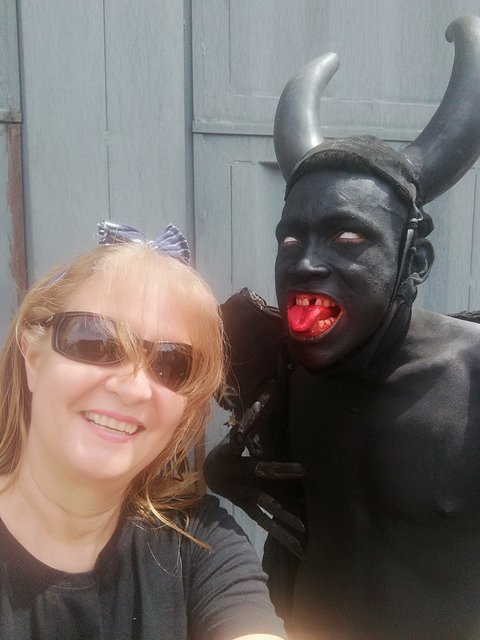
Desde este espacio quise destacar y rendir un pequeño homenaje recordando a este ilustre personaje, a mi querido cultor, inimitable e inigualable: "Diablo de Cumaná". Sr. Luis Del Valle Hurtado; este carnaval bailas desde el cielo, acá en Cumaná por siempre vivirás y danzarás en el corazón del pueblo sucrense y muy especialmente de los cumaneses.
From this space I wanted to highlight and pay a small tribute remembering this illustrious character, my dear cultor, inimitable and incomparable: "Diablo de Cumaná". Mr. Luis Del Valle Hurtado; this carnival you dance from heaven, here in Cumaná you will always live and dance in the heart of the people of Sucre and especially of the people of Cumaná.
